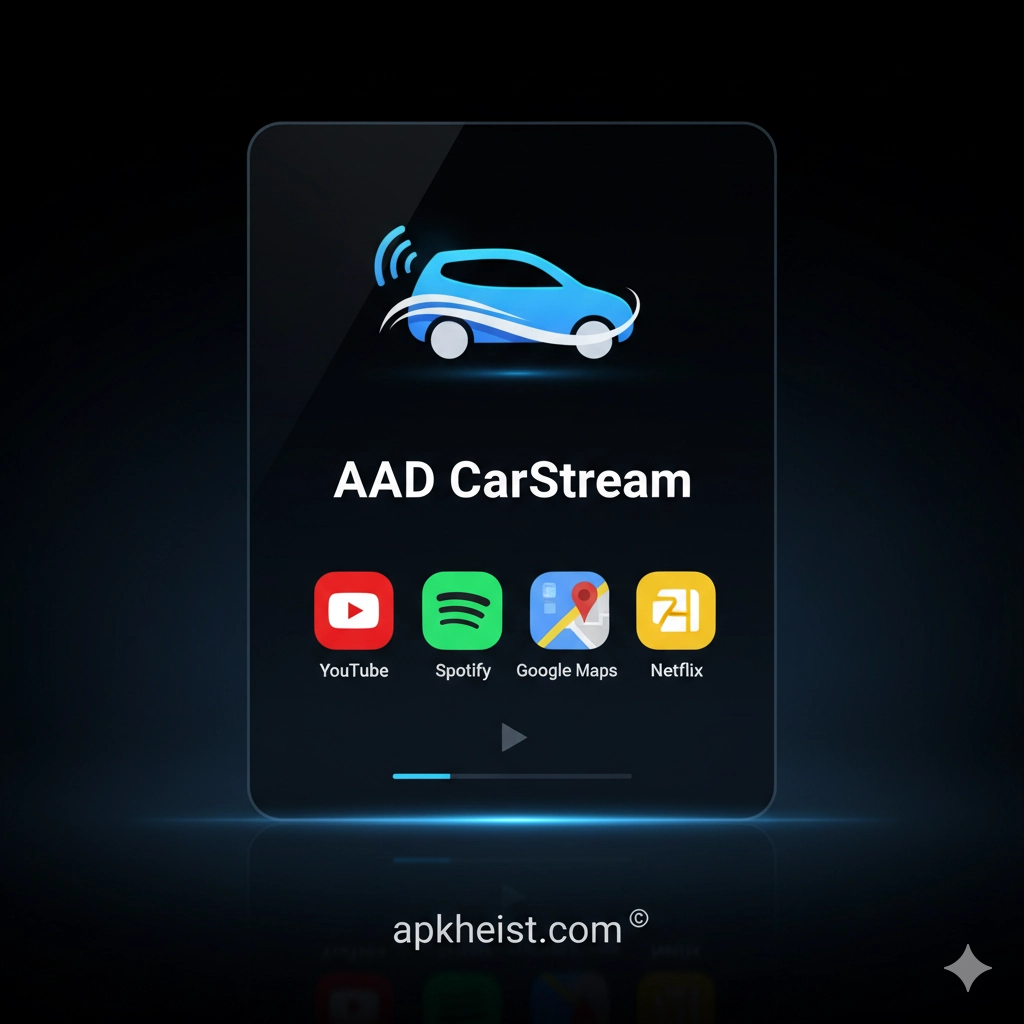Long intro: If you want to turn your car’s infotainment into a lightweight entertainment and utility hub, aaad CarStream (often distributed alongside the AAAD “Android Auto Apps Downloader”) provides a practical route. It’s used by enthusiasts who want YouTube, local media playback, and screen-mirroring features inside Android Auto or compatible head units. While CarStream focuses on in-car playback and mirroring, AAAD simplifies locating and installing these otherwise unsupported apps. Because some installs rely on sideloading and enabling developer/unknown-source options, follow safe installation steps and confirm compatibility with your vehicle and local laws before using video playback while driving. :contentReference[oaicite:0]{index=0}
1. What is aaad CarStream? — A quick definition and use cases.
2. Key features — What CarStream can do: YouTube, local files, mirroring.
3. How to install (AAAD method) — Step-by-step using AAAD or sideloading.
4. Compatibility and car safety — Which Android versions and head units work.
5. Troubleshooting tips — Common problems and fixes.
6. Alternatives — Other apps and solutions for in-car playback.
7. FAQ and best practices — Practical advice and legal notes.
1. What is aaad CarStream?
aaad CarStream is the name many sites and stores use for a CarStream distribution that bundles or is installed via AAAD (Android Auto Apps Downloader). In practice, “aaad CarStream” refers to a CarStream APK variant packaged to work with AAAD so users can add CarStream into Android Auto’s app list and play video content on their vehicle screens. This has become a common approach because Google’s official Android Auto limits media playback apps; AAAD acts as an installation helper for third-party apps. :contentReference[oaicite:1]{index=1}
2. Key features
CarStream provides features typical of a dedicated in-car video player: the ability to launch YouTube and other streaming sources on the car display, play local MP4/MKV files, basic playback controls (seek, pause, resume), and simple account access for YouTube. Some builds also add maintenance or utility features when combined with other “aaad” branded packages. Keep in mind specific capabilities may vary by build/version and whether it’s installed natively or via AAAD. :contentReference[oaicite:2]{index=2}
3. How to install (AAAD method)
Typical AAAD installation flow: download the AAAD installer (trusted source), run AAAD and select CarStream from its list, allow the APK to install (you’ll likely enable “Unknown sources” or developer mode), then connect your phone to Android Auto — CarStream should appear in the app list. Alternative: download the CarStream APK directly (from the original GitHub or a trusted mirror) and sideload manually. Because this requires enabling non-Play Store installs, take care to use reputable sources and verify APK checksums when possible. Step guides and community threads document the process in detail. :contentReference[oaicite:3]{index=3}

4. Compatibility and car safety
Compatibility: CarStream and AAAD have been used on many Android versions; however, results vary across Android 10–14 and different head-unit firmwares. Newer Android Auto/Google Play Services changes occasionally break third-party apps, so check the latest community posts for your Android version. Safety: never operate video playback while driving. Use passenger control, and prefer playback when parked. Laws differ by region — always follow local regulations regarding in-vehicle video. Community forums are helpful to confirm whether a specific phone + car combo works. :contentReference[oaicite:4]{index=4}
5. Troubleshooting tips
If CarStream doesn't appear in Android Auto: confirm AAAD successfully installed it, enable developer mode in Android Auto and allow unknown sources for apps, or try clearing Android Auto cache and reconnecting. For audio/video sync problems, test different playback sources (YouTube vs local files) and try switching connection methods (USB vs Wi-Fi). If an APK fails to install, try a different AAAD version or a direct GitHub release. Community threads and GitHub issues often contain targeted fixes for specific phones or updates. :contentReference[oaicite:5]{index=5}
6. Alternatives
Alternatives include other mirroring apps and head-unit solutions that provide safe in-car media: CarBridge (iOS ecosystem), some manufacturer-provided apps, or official Android Auto media apps that Google supports. If you value stability and safety, consider apps that remain within official Android Auto policies or use a dedicated media player head unit. For tinkering, AAAD + CarStream remains a popular community solution.
7. FAQ and best practices
Below are practical FAQs and best practices for aaad CarStream users — read them before you install or use the app on the road.
FAQ 1: Is aaad CarStream legal?
Answer: Installing and using CarStream itself is not inherently illegal, but using it to display video while driving can violate local traffic laws. Additionally, downloading copyrighted content without permission is illegal. Use CarStream responsibly, only view video when parked or by a passenger, and respect copyright rules.
FAQ 2: Where can I safely download AAAD or CarStream?
Answer: Prefer official project pages such as a GitHub repository (e.g., CarStream or AAAD projects) or reputable APK hosts that provide checksum information. Avoid random mirrors that lack reputation. Community pages and softonic/up-to-date stores can help but verify with GitHub releases when available. :contentReference[oaicite:6]{index=6}
FAQ 3: Do I need root to run CarStream?
Answer: Most modern CarStream builds do not require root — AAAD and sideloaded APKs typically work on non-rooted phones by enabling unknown sources and developer settings in Android Auto. Some older guides referenced root for earlier versions, but community tools have reduced that requirement. :contentReference[oaicite:7]{index=7}
FAQ 4: Will CarStream work with Android 14 / latest Android Auto?
Answer: Often yes, but compatibility can change when Google updates Android Auto or Play Services. Check recent community reports and GitHub issues for the latest compatibility notes for Android 14 and newer. Sometimes a patched build or updated AAAD is needed. :contentReference[oaicite:8]{index=8}
FAQ 5: How can I improve playback stability?
Answer: Use a stable USB cable (if wired), prefer local media for smoother playback, and ensure background apps aren’t throttling resources. If using Wi-Fi casting, ensure strong signal and disable battery optimizations for CarStream/AAAD. Clear caches and restart both phone and car head unit after install.
FAQ 6: Is AAAD safe?
Answer: Reputable AAAD builds scanned and discussed in community repositories are generally considered safe, but always check APK signatures and community feedback (VirusTotal scans, GitHub stars/commits). Use caution with unknown sources and keep security in mind. :contentReference[oaicite:9]{index=9}
FAQ 7: Any final best practices?
Answer: Back up your important phone data, use trusted APK sources, read recent community threads before upgrading Android or CarStream, and prioritize safety — do not watch videos while driving. If unsure, ask in Android Auto communities for device-specific advice. :contentReference[oaicite:10]{index=10}
Internal links (selected and naturally inserted): Tools Entertainment Communication Social Music & Audio Video Players & Editors Auto & Vehicles
::contentReference[oaicite:11]{index=11}






